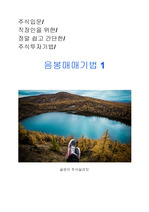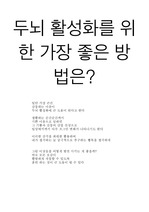남강 유역 청동기시대 분묘의 경관 -진주 대평리·평거동·초장동 유적을 중심으로-
(주)코리아스칼라
- 최초 등록일
- 2023.05.08
- 최종 저작일
- 2023.04
- 33페이지/
 어도비 PDF
어도비 PDF
- 가격 8,000원

* 본 문서는 배포용으로 복사 및 편집이 불가합니다.
서지정보
ㆍ발행기관 : 한국청동기학회
ㆍ수록지정보 : 韓國靑銅器學報 / 32권
ㆍ저자명 : 강동석
목차
요약
Ⅰ. 머리말
Ⅱ. 분묘의 가시 경관과 취락의 영역
Ⅲ. 취락 내부의 분묘 경관
1. 대평리 유적
2. 평거동 유적
3. 초장동 유적
Ⅳ. 맺음말
참고문헌
한국어 초록
남강 유역에 위치한 진주 대평리, 평거동, 초장동 등 대규모 유적의 분묘 경관을 통해 취락 안팎의 구조와 상호작용에 대해 살펴보았다. 먼저 분묘의 가시 경관과 취락 영역 간의 관계를 추론하였다. 이 는 분묘에서 바라본 시각적 체험 경관은 사회구성원들이 일상에서 인식하고 있었던 영역이며, 취락의 정치적·경제적·이념적 영역과 직접 관련이 있다는 것을 전제로 하였다. 가시권분석 결과, 대규모 취락의 가시권은 대체로 반경 5km에 해당하며, 서로 가시권을 공유하지 않는 배타적 경관을 이루고 있었다. 이를 통해 국지적 단위공동체는 각기 독립적인 영역을 유지하며 상호작용하는 등질적인 구조 를 형성하고 있었다고 생각된다. 취락 내부의 경관은 분묘군을 중심으로 차별적이고 역동적인 양상을 보이고 있었다. 이는 분묘의 군집 유형을 통해 살펴볼 수 있다. Ⅰ유형은 대형 묘역지석묘 주변에 분묘군이 조영된 것으로, 선대 권력을 상징하는 지석묘 주변에 분묘를 환상이나 열상으로 배치하여 전통적 사회 질서를 유지하고자 하였던 경관 조성 전략이 작용한 결과로 이해된다. 특히 이 분묘군은 취락 안팎에서 상시 체험 가능한 현저한 곳에 축조되어 있어 구성원들의 시선과 움직임을 통제할 수 있는 지배적 경관을 구성하고 있 었다. Ⅱ-1유형은 생활 공간에 분묘를 열상으로 배치하여 이를 매개로 공동체성을 강화하려는 의도 가 반영된 것으로 보인다. Ⅱ-2유형은 농경지 경계면에 분묘를 축조하여 마을의 안녕과 풍요를 기원 하는 수단으로 활용되었다. Ⅲ유형은 분묘들의 장축이 상호 교차하는 군집으로, 무덤의 공간 순서 변 경을 통해 사회 질서의 변화를 추구하였던 행위자의 표현으로 보인다. 이와 같은 군집 유형은 모든 대규모 취락에서 일률적으로 확인되지 않았다. 취락 내부의 공간적 맥 락을 통해 볼 때, 분묘는 단순히 매장시설이 아니라, 유력자들이 권력 관계를 합리화하거나 재조정하 고 구조화하는 사회적 행위 공간이었다. 이러한 공간 조성은 각 취락의 물리적 환경과 구성원들의 경 관 해석에 영향을 받았으며, 분묘 축조를 주도하였던 주체들의 공간 구현 전략에 따라 각기 다른 형태 로 나타났다. 남강 유역 대규모 취락의 분묘는 각 사회-공간의 상호작용에 의해 형성된 차별적 경관 을 구성하고 있었으며, 권력과 공동체성을 대표하는 의미화된 장소로서 역할을 하고 있었다.
영어 초록
The landscape of settlements in the mid Bronze Age in the Namgang River basin was examined focusing on tombs of large-scale sites such as Daepyeong-ri, Pyeonggeo-dong, and Chojang-dong in Jinju. First, the territory and interaction of the settlements inferred through the visual landscape of the tomb. This presupposes that the visual experience landscape of the tomb is a territory recognized by members of society in their daily lives and is directly related to the political, economic, and ideological areas of the sites. As a result of the analysis of visibility, the visibility of large-scale villages generally correspond to a radius of 5km, forming an exclusive landscape that does not share visual area. Through this, it is believed that the local communities formed a qualitative structure, such as maintaining and interacting with each other in an independent territory. The landscape inside the settlements showed a discriminatory and dynamic pattern centered on the tombsp. This can be examined through the cluster type of tomb. Type I is a construction of tombs around a large dolmen, and is understood as a landscape creation strategy to maintain the traditional social order by placing tombs in laceration around the dolmen, which symbolizes previous power. In particular, this tomb group was built in a prominent place that could be experienced at all times inside and outside the site, forming a dominant landscape that could control the visibility and movement of members. Type II-1 seems to reflect the intention to strengthen community through this by arranging tombs in a laceration in the living space. Type II-2 was used as a means to pray for the well-being and abundance of the settlement by building tombs at the boundary of agricultural land. Type III is the intersection of the tomb pillars, and it seems to be the expression of the actor who tried to re-create the social order by changing the spatial order of the tomb. This type of cluster was not uniformly identified in all large-scale sites. From the spatial context within the settlement, the tomb was not just a burial facility, but a social action space where influential people rationalized, readjusted, and structured power relations. This space creation was influenced by the physical environment of each settlement and the interpretation of the landscape of the members, and appeared in different forms depending on the space implementation strategies of the subjects who led the construction of the tomb. The tombs of large-scale sites in the Namgang River basin formed a complex landscape formed by differential interactions between each society and space, and served as a place of meaning representing power and community.
참고 자료
없음


























